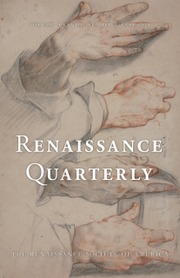A result of the ArtMedGIS Project funded by the European Commission, Artistic and Cultural Dialogues in the Late Medieval Mediterranean brings together an interdisciplinary scholarly collective, focusing on the complex interactions between Islamic societies and their milieu. The aim of this research project is “to assess the artistic exchanges between various societies and territories in the late medieval Mediterranean (between the twelfth and fifteenth centuries) through the application of Geographical Information Systems (GIS) and HBDS methodology” (255). The final chapter in the volume provides a summary of the project and some preliminary findings, including a map showing the geographical disbursal and concentration of muqarnas (a type of three-dimensional ceiling decoration) in Islamic, Jewish, and Christian architectural monuments (figure 13.2 on 259), based on a database compiling existing structures as well as textual sources. Analysis of this data challenges art historical assumptions about the trajectory of influence, providing new evidence for the movement and development of visual forms within the broader Mediterranean context.
This project, while not explicitly considered within all the essays, provides the conceptual framework for the four sections of the volume: “Al-Andalus Beyond al-Andalus: The Maghreb and the Mashriq”; “Andalusi Legacy in Medieval Christian Art”; “Andalusi Cultural Legacy in the Iberian Societies”; and “Circulation of Cultural Goods in the Medieval Mediterranean.” Within each of these parts, the authors consider the influence, impact, and interactions of various cultures beyond the center/periphery binary.
While the vast majority of the volume focuses on the Iberian Peninsula, several contributions consider cultural production within a wider Mediterranean context. The volume opens with two essays that consider the circulation of texts between al-Andalus and the Islamic societies of the Eastern Mediterranean, specifically Javier Albarrán’s “From the Islamic West to Cairo: Malikism, Ibn Tūmart, al-Ghazālī and al-Qādī ‘Iyād’s Death” and Maribel Fierro’s “The ‘Bestsellers’ of al-Andalus.” These essays introduce the reader to the cultural networks that integrated Islamic Iberia into the broader Mediterranean, illuminating the pathways for the concurrent movement of visual culture.
Many of the subsequent art historical essays expand upon this topic. For example, Juan Carolos Ruiz Souza’s contribution, “Granada and Castile in the Shared Context of the Islamic Art in the Late Medieval Mediterranean,” challenges the isolation of post-Umayyad Andalusian artistic production within the scholarly literature by considering visual and symbolic continuity, including the use of muquernas, between al-Andalus and the Christian kingdoms of Iberia, Merinid Morocco, and Mamluk Egypt. Similarly, “Art and Science in al-Andalus and the Late Medieval Mediterranean Cultures: Almohad, Nasrid and Ayyubid Astrolabes in Their Context” by Azucena Hernández Pérez argues that the desire for a universal astrolabe, an instrument functional at all latitudes, led to technological developments in Almohad Seville, Nasrid Granada, and Ayyubid Egypt and Syria. By tracing both textual awareness of these developments and the evidence of existing objects, Hernández Pérez nuances scholarly understanding of the flow of knowledge between the Eastern and Western Mediterranean.
The volume also considers the ways in which the cultural dialogue of the Mediterranean traversed the religious and political boundaries of the region. For example, “Siculo-Arabic, Andalusi and Fatimid ivory Works: Iconographic Transfers and Visual Propaganda” by Noelia Silva Santa-Cruz argues that the Norman court adopted the visual strategies of the Fatimid caliphate in order to communicate its power and legitimacy.
When considered in total, Artistic and Cultural Dialogues in the Late Medieval Mediterranean fulfills many of its articulated aims. The collected essays clearly demonstrate the complex webs of awareness, influence, and interaction between the Western Islamic societies and the surrounding region. The authors move beyond consideration of stylistic mimicry or hybridity to consider how the use of specific models functioned as a conveyor of meaning. The historiographical significance of this methodological framing is highlighted by the forward and preface, both of which describe the project as an important deviation from the narratives of opposition between Islam and Christendom. Ideally this perspective would have included the avoidance of outdated language, such as the use of “the Moors”/”Moorish” (107) and “the oriental lands” (258). However, this does not take away from the persuasiveness of the text nor its importance to the discourse on the artistic and visual culture of the late medieval Mediterranean.



